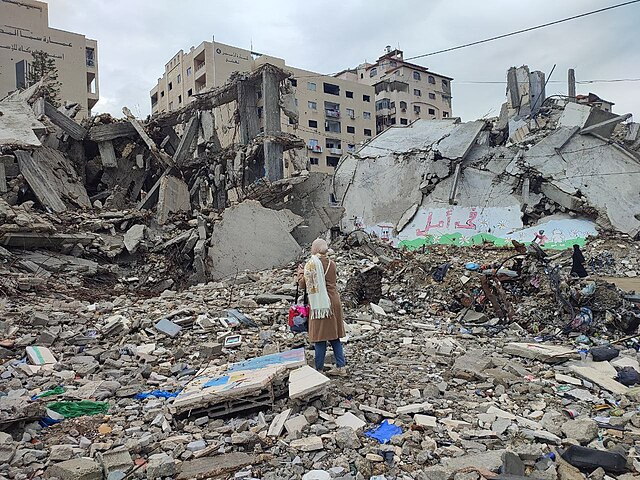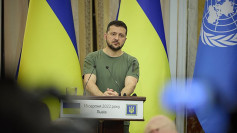President Donald Trump said Sunday that the U.S.-brokered ceasefire in Gaza remained in effect despite a new round of Israeli strikes that killed dozens of Palestinians and renewed accusations of violations by both Israel and Hamas. The violence, centered around the southern city of Rafah, marked the most serious test yet for the truce, which went into effect on October 10.
"We wanna make sure that it's going to be very peaceful with Hamas," Trump told reporters aboard Air Force One, reiterating that the administration believed Hamas leadership may not have authorized the attack that killed two Israeli soldiers. "They've been quite rambunctious. They've been doing some shooting, and we think maybe the leadership isn't involved in that," he said. "It's going to be handled toughly, but properly."
The Israel Defense Forces (IDF) said Sunday that two soldiers, Maj. Yaniv Kula, 26, and Staff Sgt. Itay Yavetz, were killed when militants launched an attack against troops near Rafah, violating the ceasefire. The IDF responded with airstrikes on 20 targets across Gaza, calling the incident a "blatant" breach of the truce. A spokesperson for Gaza's Health Ministry said at least 23 people were killed in the Israeli strikes, while Hamas-run civil defense agencies claimed 45 fatalities, a figure that could not be independently verified.
Trump said the U.S. was reviewing the Israeli response. Asked whether the strikes were justified, he replied, "I'd have to get back to you on that." When pressed about the status of the truce, he confirmed, "Yeah, it is."
The President's remarks closely mirrored Hamas' own claims that the deadly incident occurred in an area under Israeli control, suggesting that "rebels" unaffiliated with Hamas leadership may have been responsible. Trump's special envoy Steve Witkoff and adviser Jared Kushner flew to Israel on Monday to help maintain the ceasefire and oversee its implementation. According to Axios, the White House asked Israel to "respond proportionately but show restraint."
The truce, which halted fighting and allowed for increased humanitarian aid into Gaza, was designed to secure the release of remaining hostages and the repatriation of bodies. Under the deal, Hamas agreed to free 20 living hostages and return the bodies of 28 deceased captives. While the living hostages were released within 72 hours, Hamas said it could not yet locate all the bodies due to the widespread destruction in Gaza.
"Hamas hasn't been living up to their part of the deal," said Orna Neutra, the mother of Omer Neutra, a 21-year-old Israeli-American soldier whose body remains in Gaza. "Our son, he's still there," she told NBC News, saying her family has been working with U.S. envoys to recover the remains.
Meanwhile, Israeli Defense Minister Israel Katz warned Hamas that any fighters found beyond the so-called "yellow line"-the boundary of Israel's withdrawal zone-would be "a target for attack without any further warning." Katz said he had instructed the IDF to send a "clear message" to Hamas through an American oversight mechanism that "any militant found beyond the yellow line must evacuate the area immediately."
Hamas denied any involvement in the Rafah attack and accused Israel of fabricating "flimsy pretexts" to justify renewed assaults. Its government media office said Israel had committed 80 ceasefire violations since the truce began, resulting in dozens of deaths and hundreds of injuries.
As U.S. officials sought to stabilize the situation, Vice President JD Vance warned that many militant cells remained active. "Some of those cells will probably honor the ceasefire. Many of those cells, as we saw some evidence of today, will not," he said, adding that Gulf Arab forces might eventually be needed to enforce order in Gaza under the next phase of Trump's 20-point plan, which calls for Hamas' disarmament and the transfer of Gaza's governance to an international technocratic committee.






